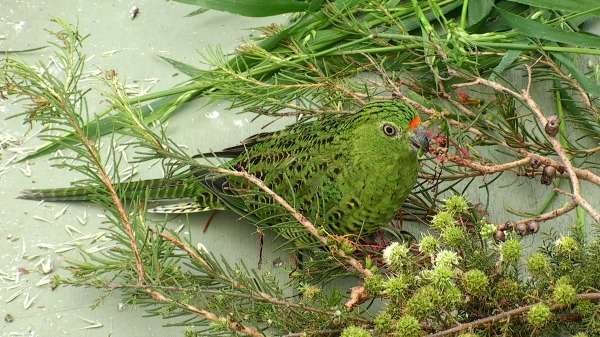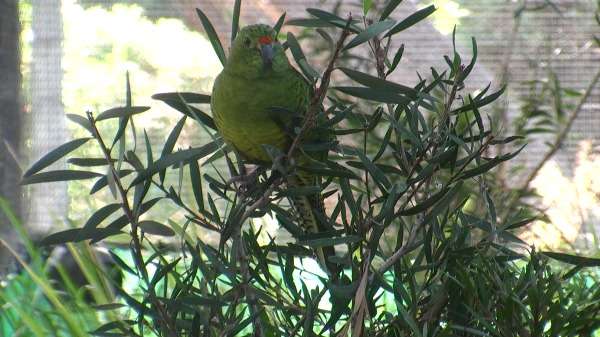Third time may prove lucky for WA's rarest bird

Perth Zoo keepers have high hopes WA's rarest bird could produce the world's first captive-bed western ground parrot chick in the coming months.
Staff have spent almost two years unravelling the mystery surrounding the critically-endangered species Pezoporus flaviventris, which is one of only five ground-dwelling parrots in the world.
The impact of habitat loss, feral cats and bushfires have driven the bird to the brink of extinction, with less than 140 parrots believed to exist near Bremer Bay and Esperance.
With wild populations dwindling, Perth Zoo became home to five parrots in July 2014 to provide an insurance population to safeguard the species.
Three males, nicknamed Joy, Zephyr and Brutus, and two females called Dawn and Fifi are under 24-hour surveillance.
The zoo's Australian fauna zoology supervisor Arthur Ferguson, who oversees the program, says around-the-clock observation has helped shed light on the "secretive and shy" species.
"We are watching their every move," he says.
"Very little is known about the bird's breeding behaviour and biology because they are a difficult species to observe in the field.
"To date, there have only been two nests of wild western ground parrots ever found."

The team are honing their husbandry techniques by monitoring the birds' social interaction and identifying individual calls—but there is still a lot to learn.
"It's incredible how cryptic the birds can be—even with the number of cameras we have, they can still sometimes be hard to locate," Mr Ferguson says.
"We don't fully understand what all the calls mean yet.
"We're still piecing together that puzzle and collating a catalogue."
The zoo is busily preparing for the bird's breeding season, which occurs between July and December, with any eggs likely to be laid around September.
The keepers hope it will be a case of 'third time lucky' this year, after pair bonding between Joy and Dawn and Fifi and Zephyr, and courtship displays and nesting behaviour in the past.
"Dawn has been shown her intentions of wanting to mate with the males for the last two years but they have not been able to come through with the goods yet," Mr Ferguson says.
"We hope to change that this year."
Shade cloth 'privacy screens' were installed recently and incubators are ready to go.
"We are confident the species can be bred in captivity but there are a lot of unknowns until we have the eggs on ground and chicks," Mr Ferguson says.
Provided by Science Network WA
This article first appeared on ScienceNetwork Western Australia a science news website based at Scitech.


















